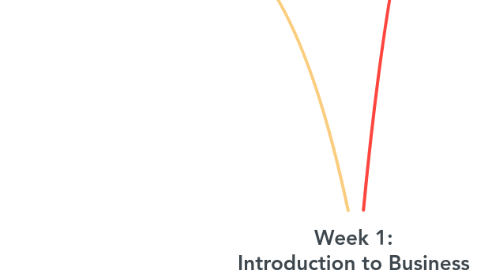
1. SWOT An important tool to use when making strategic decisions and can assist in maximising business value While PESTLE provides information on external factors, a SWOT analysis focuses on a company's internal processes
1.1. Strengths
1.2. Weaknesses
1.3. Opportunities
1.4. Threats
2. PESTLE Having an understanding of these factors can assist in making the right decision
2.1. Political
2.1.1. Trade tariffs Conflicts Taxation policies Fiscal policies
2.2. Economic
2.2.1. Inflation rate Disposable income Unemployment rates Interest rates Foreign exchange rates Economic growth patterns
2.3. Sociological
2.3.1. Religion and ethics Consumer buying patterns Demographics Health Opinions and attitudes Media Brand preferences Education
2.4. Technological
2.4.1. Automation Communication Patents Licensing Technological development Information technology Research and Development Technological awareness
2.5. Legal
2.5.1. Employment laws Consumer protection Industry specific regulations Regulatory bodies Environmental regulations
2.6. Environmental
2.6.1. Climate Weather Geographical location Environmental offsets Stakeholder and consumer values Global climate change
3. The fundamentals of business decision making
3.1. - Any decision is critical to the success of a business - Solve problems, respond to a potential opportunity
3.1.1. identifying a goal
3.1.2. getting the relevant information and data
3.1.3. weighing the alternatives
3.1.4. making an informed decision
3.2. Effective decision-making is
3.2.1. Successful
3.2.2. Responsible
3.2.3. Robust
3.2.4. Defensible
3.2.5. Inclusive
4. different types of decisions
4.1. it helps
4.1.1. determining information required
4.1.2. understanding the potential impact
4.2. based on the level at which they occur
4.2.1. strategic decisions
4.2.2. tactical decisions
4.2.3. operational decisions
4.3. relate to the scale of the decision to be made (McKinsey), particularly at the executive level
4.3.1. Big bets
4.3.2. Cross-cutting decisions
4.3.3. Delegated decisions
4.4. Uber game: https://ig.ft.com/uber-game/
4.5. McKinsey report: Best practices to support good decision making
4.5.1. 1. Make decisions at the right level
4.5.2. 2. Focus on enterprise-level value
4.5.3. 3. Get commitment from relevant stakeholders
